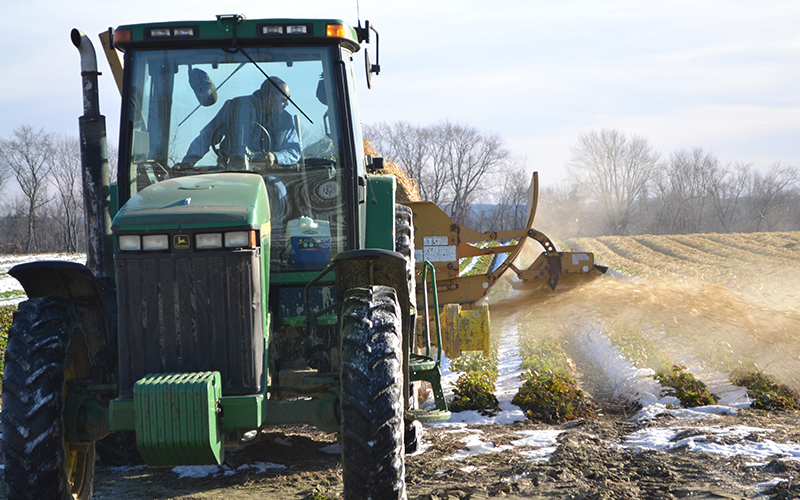September 19, 2023

It happened in just a few seconds; I was trying to hook up to a trailer. A co-worker was holding up the hitch of the trailer while motioning me backward. It was raining, so I was wearing rubber boots, and my foot slipped off the clutch, jolting the tractor into reverse and crushing my co-worker’s leg between the tractor and the trailer. An ambulance ride, OSHA inspection and subsequent fines later, I realized it was time for our farm to take safety much more seriously.
Farming remains one of the most dangerous occupations in the country. The government statistics are sobering – in 2019, 410 farmers and farm workers died from work-related injuries, while about 100 agricultural workers suffered an injury resulting in lost-work time, according to The National Institute for Occupational Safety and Health (NIOSH). In 2020, the U.S. Bureau of Labor Statistics reported that the Agriculture, Forestry, Fishing and Hunting industry sector had the third highest number of fatal work injuries behind Transportation and Warehousing and Construction at the top of the list. If statistics seem too abstract, talk with some of your fellow farm owners. It’s likely at least a few of them can recount a serious accident on their farm.
Accidents can, and do, happen all the time. It’s important to implement preventative precautions and to be prepared if the worst-case scenario happens.
How can you prepare?
If your farm has more than a handful of employees, you should have a safety committee. It should meet on a regular basis, keep notes and implement agreed-upon recommendations. Two important tools for preventing accidents are walkthroughs and training.
Safety Walkthrough
Walk through your operation regularly with a safety mindset. How many safety issues are being overlooked? Is equipment up-to-date with guards in place? Are people working safely and observing protocols, or are they taking shortcuts? Are things “jury-rigged” in an unsafe manner to keep them working?
There are resources available to help you with safety reviews of your business. Your liability insurance company may have someone available to complete a walkthrough with you to spot safety issues. If you’re located in New York state, the New York Center for Agricultural Medicine and Health (NYCAMH) offers on-farm safety surveys. In addition, most state Departments of Labor offer free workplace safety consultations.
It may be a bit intimidating to contact state officials, but these services can help you recognize and control potential safety and health hazards at your worksite and assist in training staff. They also show compliance diligence in the event that an accident does occur on your farm, and may even qualify you for an exemption from routine OSHA inspections. Typically you cannot be fined for violations found during a voluntary consultation. Generally, your only obligation is to correct serious safety violations in a timely manner.
Employee Training
While putting on your “safety inspector” hat is one important step, employee training is another. Are your employees trained in the safe operation of equipment in a language they understand? Do employees know what to do when they identify a safety issue? Do they know what to do in case of an accident? Even training such as proper lifting can help you reduce back injuries and workers’ compensation claims. If you don’t already have one, consider putting a regular training program in place for your staff, and begin covering safety issues one at a time.
The National ROPS Rebate Program deserves special mention. The acronym stands for Roll-Over Protective Structure, and they can save your life in the case of a rollover. All your tractors should have ROPS and seatbelts. Even most older equipment has a retrofit available. The ROPS rebate, which is now effective nationwide, may pay for up to 70% of the cost.
Record-keeping
Finally, keep records of everything you do. In the case of an inspection, records are your friend. They will show, at a minimum, that you have made an effort to take safety compliance seriously. If you don’t have records of things like safety walkthroughs, preventative improvements, employee training, etc., it’s as if these precautionary measures didn’t happen.
Most of these safety steps are no- or low-cost. Accidents are expensive. Think about what your workers’ compensation insurance costs. Think about what you would do if you were unable to work for an extended period due to an injury.
Safety matters! Start today!
2023 National Farm Safety and Health Week is September 17th to the 23th. Visit the National Education Center for Agricultural Safety (NECAS) website for daily safety topics and webinars.





